Is Istanbul worth visiting? In this post, I’ll reveal everything to know before visiting Istanbul to help you decide whether the city should be at the top of your bucket list.
Deciding if Istanbul is worth seeing means looking at a few factors. A trip to Istanbul is a trip to Turkey’s most vibrant city. While it may not be the nation’s official capital, you’d be hard-pressed to find anybody who doesn’t consider this metropolis the true heart of Turkey.
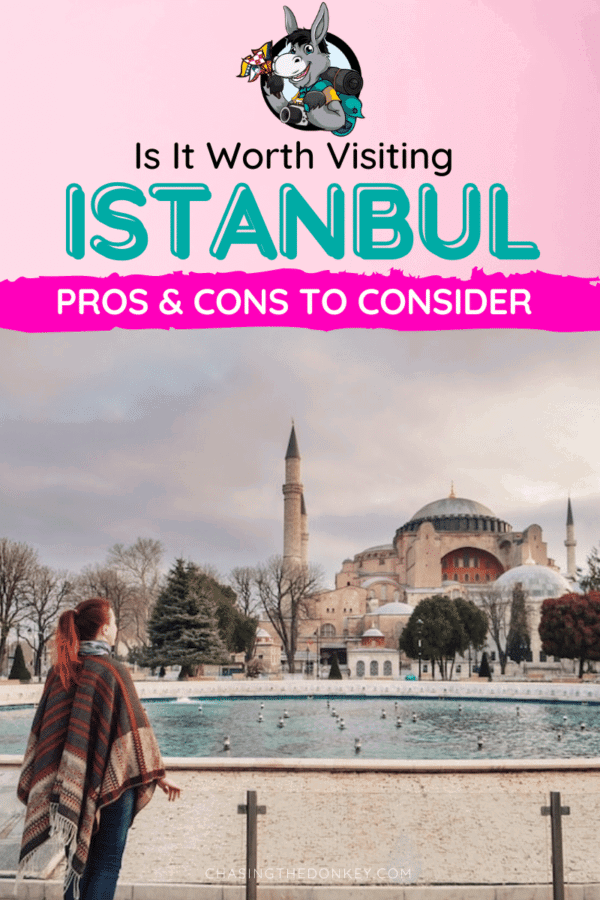
Istanbul is a fascinating blend of East and West, boasting a rich trove of historical buildings, delicious cuisine, and diverse culture.
Skip Ahead To My Advice Here!
What Makes Visiting Istanbul A Great Idea
Why visit Istanbul?
For starters, no other city in Turkey has a higher concentration of main tourist attractions. Just in the central Sultanahmet neighborhood alone, you have the Hagia Sophia Mosque, the Blue Mosque, and the Basilica Cistern (scroll down for more details). At the same time, the splendors of the Topkapı Palace and the floral beauty of Gulhane Park are a short stroll away.
As with most cosmopolitan places worldwide, Istanbul is a hub for good food, whether you want a glam, fine dining experience or a kebab from a local street stall.
The same principle extends to shopping: if you want a touristy memento, you’ll find plenty of places in the Grand Bazaar willing to sell you pottery, clothing, or a magnet, but there are also huge malls that offer a more contemporary look at Turkish fashion.
There are also plenty of green spaces you can escape to on the outskirts of the city center if the bustle becomes a bit too much. Some of the most popular with locals, for example, are Belgrad Forest and Princes’ Island.
Pros And Cons Of Istanbul
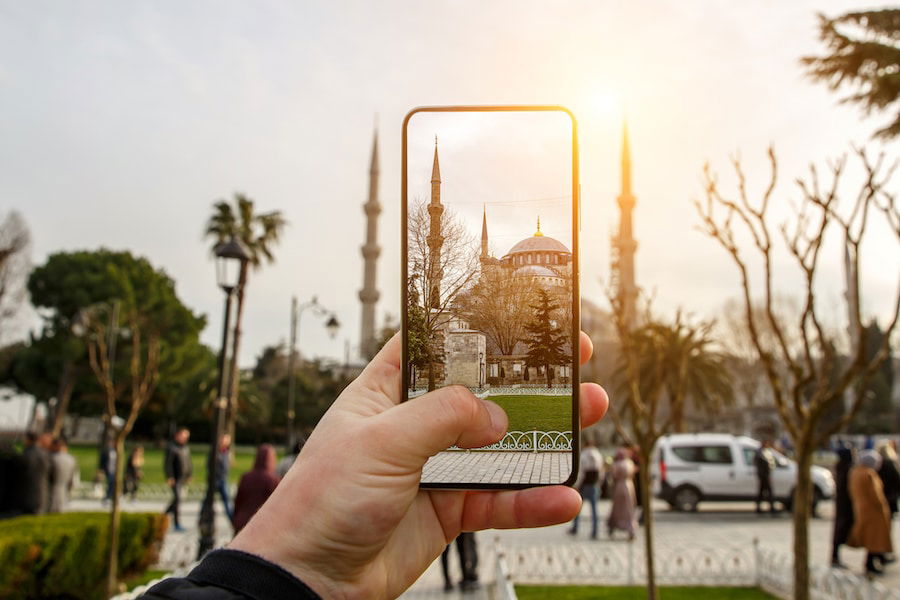
While we’ve so far focused on the good reason or ten why you should plan a visit to Istanbul, it’s not all plain sailing. In this section, we’ll briefly outline the main pros and cons of any trip to this vibrant city, including discussing how safe Istanbul is.
A Rich History
From the Byzantines to the Ottomans, Istanbul is bursting with reminders of the city’s storied past, both as the last bastion of the Roman Empire and as the capital of the last great caliphate.
Great Public Transport
While not all forms of transport in this unique city are easy to navigate as a tourist, the metro and the tram are both very self-explanatory and make it easy to get to all the popular tourist areas of town that a visitor might wish to see.
Ride Hailing
Unlike smaller cities in Turkey, you can rapidly summon an Uber or the local equivalent, BiTaksi, if you find yourself wanting a bit of private transportation.
Affordable
Turkey, in general, is not expensive compared to European cities. Of course, everything costs more in Istanbul because it’s such a tourist hotspot and a desirable place to live, but it’s still affordable in the grand scheme of things.
Cuisine
There’s rarely a time when you can’t get a delicious meal in Istanbul; the streets of Istanbul have so many corner food stalls, restaurants, taverns, and cafes vending all kinds of local specialties and Turkish coffee to keep you awake throughout the night.
Nightlife
Speaking of the night, Istanbul has the best selection of clubs and bars in Turkey. The country’s most populous metropolis has a more liberal outlook than many other areas, making for a buzzier party scene.
Good Weather
Istanbul may not have summer weather that’s as perfect as the southern coastal cities of Bodrum or Antalya, but it’s still nice and warm from April to October.
Crowded
One of the main reasons not to visit Istanbul is the swarm of locals and visitors. Admittedly, what big city isn’t full of people? But for those looking for a quiet getaway to relax and refresh, this isn’t the place for you.
Congestion
Linked to the sheer volume of people is the congestion. Traffic can be absolutely horrendous during peak times when public transportation also becomes stiflingly packed.
Language Barrier
Turkey is not one of those countries where everyone speaks English. Of course, this being Istanbul, there is a higher proportion of English speakers than elsewhere in the country, but be prepared to muddle along with hand gestures at local stalls.
Taxi Scams
There are a couple of common scams you’ll come across in Istanbul, but there’s nowhere you’re more likely to be cheated than in a taxi. From fiddling with the meter to giving incorrect change to insisting on a massive tip, taxi drivers have a number of ways they try to swindle unwitting tourists. We recommend you avoid them unless absolutely necessary.
Pickpocketing
Istanbul is far from the worst place we’ve traveled to in terms of pickpocketing. However, it would be best if you still were on the lookout for opportunistic criminals near popular attractions looking to take advantage.
Terrorism
We must stress that terrorism is not common, and you certainly shouldn’t feel that going to Istanbul is like gambling with your life. However, it would also be negligent not to mention that several governments (including the USA and countries in the EU) have warned their citizens that they are at risk of being targeted by terrorists.
When Is The Best Time To Visit Istanbul
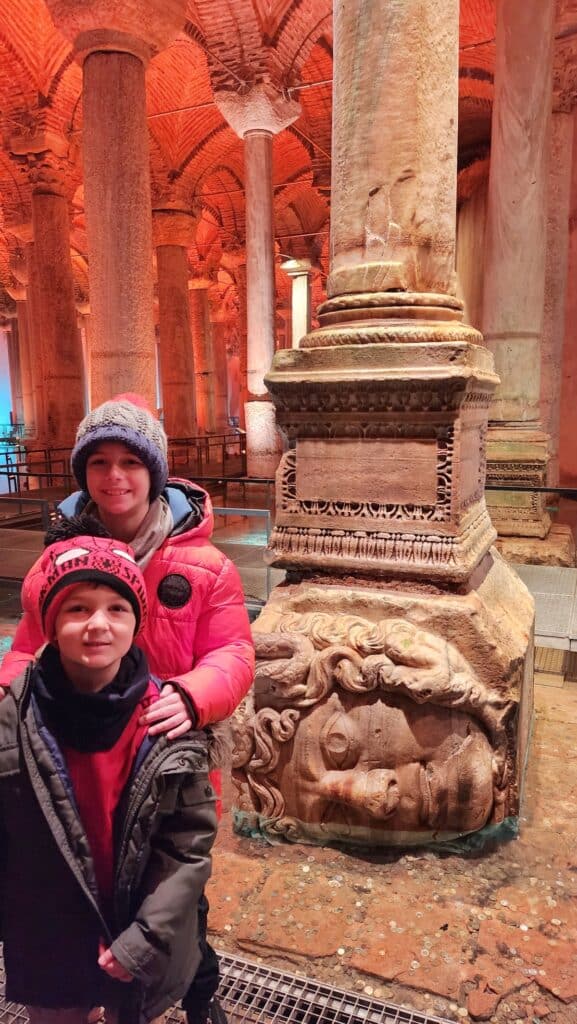
The best time to visit Istanbul depends on whether you prioritize weather or lack of crowds. While the summer months are a toasty 85 degrees Fahrenheit on average (about 30 degrees Celsius), they are also when the city sees the highest number of tourists.
Overall, the shoulder months of April, May, September, and October are probably the best times to visit Istanbul. These periods tend to be less busy while also being relatively warm, with average highs of about 77 degrees Fahrenheit (23 degrees Celsius) and average lows of around 62 degrees Fahrenheit (17 degrees Celsius).
If you want to explore the city with decidedly fewer visitors, head to Istanbul from November to February. Just be warned that you will likely experience wetter weather and fewer daylight hours.
Brands We Use And Trust
What Does Istanbul Offer For History Fans
Istanbul has more to see than any other part of Turkey. So much has survived from the Byzantine and Ottoman periods, with even older pieces housed in the Istanbul Archaeology Museums.
We’ve highlighted only our absolute favorite spots here, but you can see a more detailed list of historical sights to explore in the city in our other Istanbul posts.
Hagia Sophia
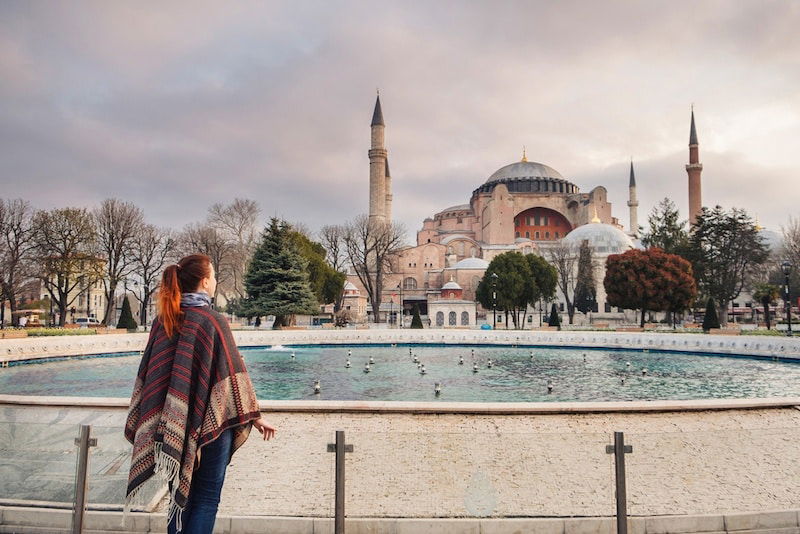
The Hagia Sophia has been a symbol of the city for over a thousand years, possibly the most famous place to visit in Istanbul. Originally constructed in 537 by Emperor Justinian I of the Byzantine Empire as a Christian church, it was converted into a mosque after the fall of Constantinople in 1453 before becoming a museum. Just a few years ago, it was reconsecrated as a mosque.
Right in the heart of the Sultanahmet district, the Hagia Sophia’s famous dome and quartet of minarets are readily recognizable on the horizon. The insides are just as splendid, filled with gilded mosaics, golden script, and glittering chandeliers.
As of January 15th, 2024, Hagia Sophia Grand Mosque has introduced a distinct policy for tourists and worshippers. If you’re visiting for cultural exploration, there’s now a 25 euro entry fee. This ticket grants you access to the gallery floor, where you can admire the sanctuary’s stunning Ottoman and Byzantine features, including the historic mosaics.
This new policy is all about balancing the preservation of this iconic site and enhancing the visitor experience, while ensuring that daily worship remains undisturbed.
Handy QR codes offer insights in 23 languages, making your visit both informative and enjoyable. For the latest updates and details, it’s a good idea to check out their official website.
Blue Mosque
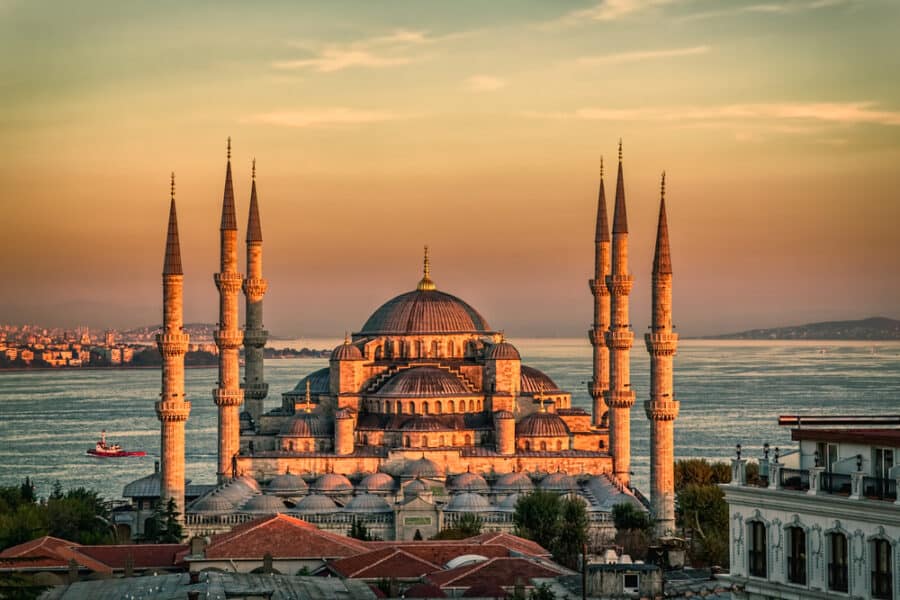
Facing the Hagia Sophia across Sultanahmet Square, the Blue Mosque was commissioned in 1609 and opened seven years later. Officially known as Sultanahmet Mosque, it takes its name from the man who ordered its construction, Ahmed I, and was designed to become the new imperial mosque.
As such, it had to be bigger and better than the Hagia Sophia, and we can’t help but marvel at the enormity of the building every time we visit: there are 20,000 hand-glazed tiles, 200 stained glass windows, 13 domes, and six minarets.
It’s a common misconception that the Blue Mosque got its nickname because of the pastel blue color of the domes as seen from the exterior, when, in fact, the moniker comes from vivid blue Iznik tilework decorating the interior.
Basilica Cistern
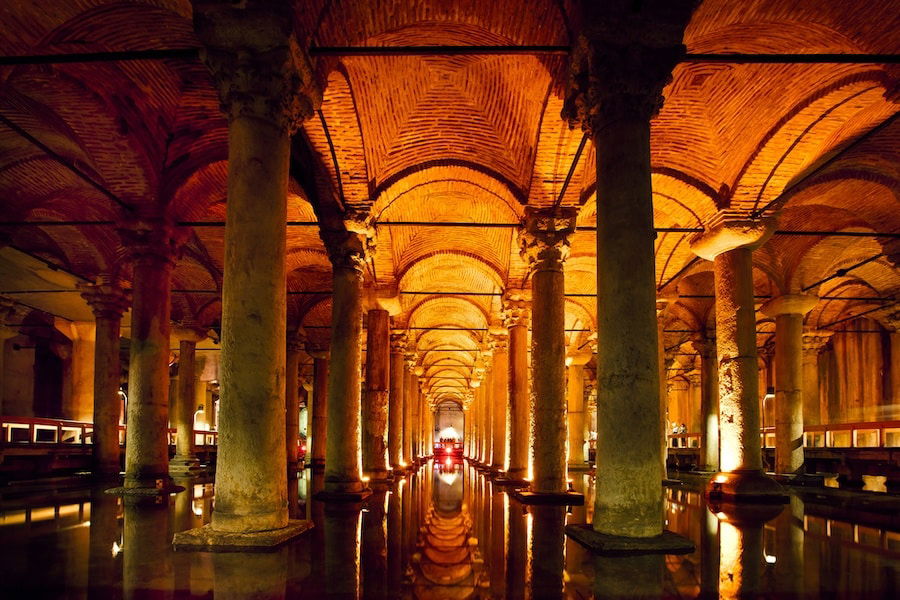
Another relic from the reign of Emperor Justinian I, the Basilica cistern dates to 532 AD and was used to store water for the city of Constantinople. Today, the echoey subterranean cavern contains only a shallow pool to illustrate its former purpose.
As you wander between the 332 columns that make up the space, keep an eye out for the Medusa head bases. These intricately sculpted gorgon faces were, like the rest of the structure, pillaged from other nearby ancient ruins but have become the subject of their own set of legends.
Topkapi Palace
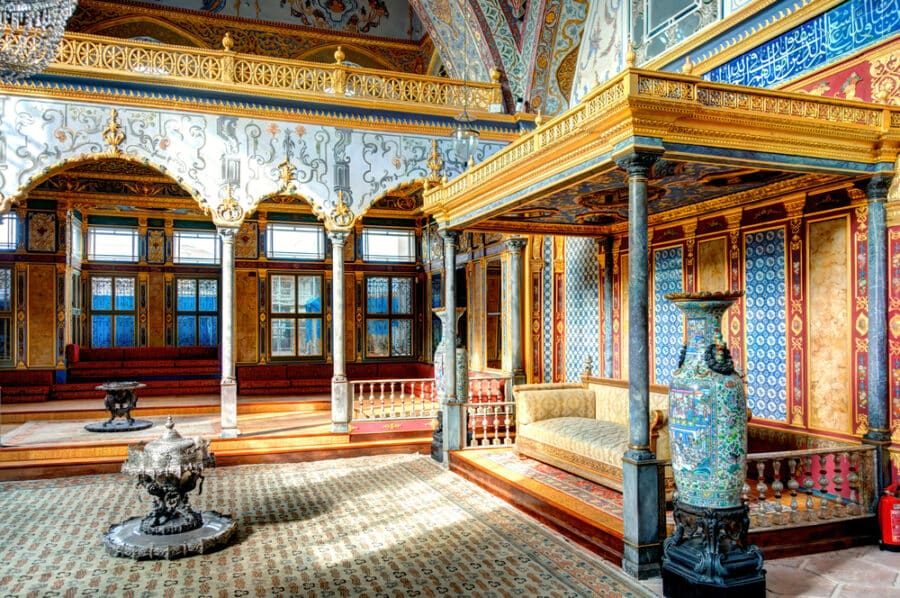
For nearly 400 years, the Topkapi Palace was the principal residence of many of the Ottoman Sultans. Mehmed the Conqueror began building the luxurious complex in 1459 atop a hill beside the Bosporus so he could look down upon the entire city – and so that his subjects could all see the symbol of Ottoman power looming above them.
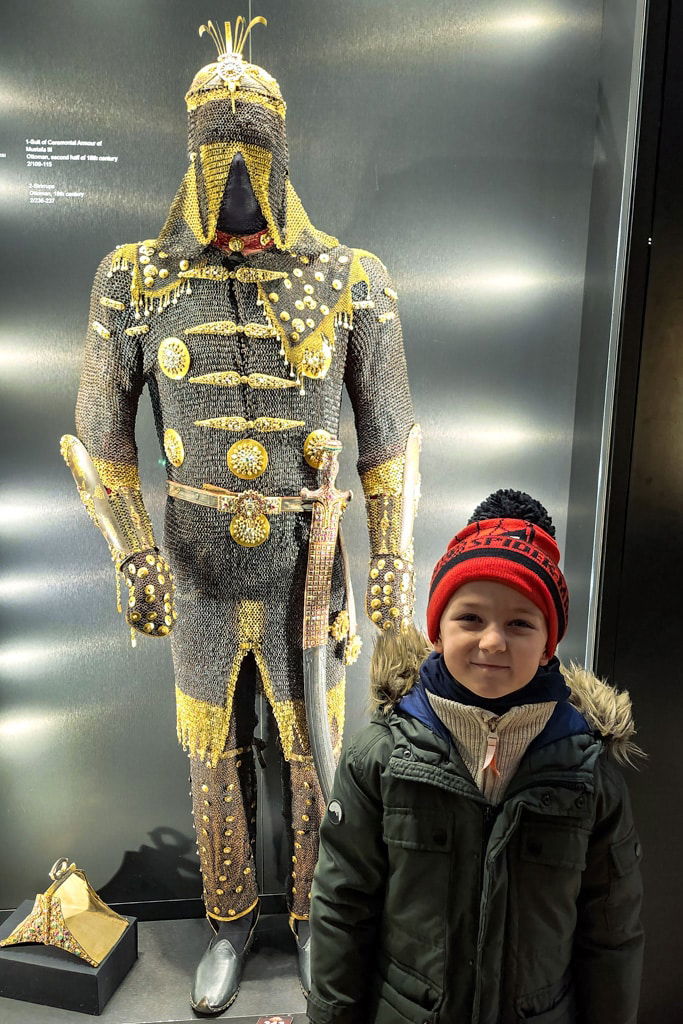
Today, the Topkapi Palace is one of the most elaborate remnants of the old Ottoman Empire, with colorful tilework, sculpted gardens, and impressive marble structures. If you have a little extra time (and the inclination), visit the Hagia Irene while you’re here, the only church in Istanbul still standing that has never been converted into a mosque.
Galata Tower
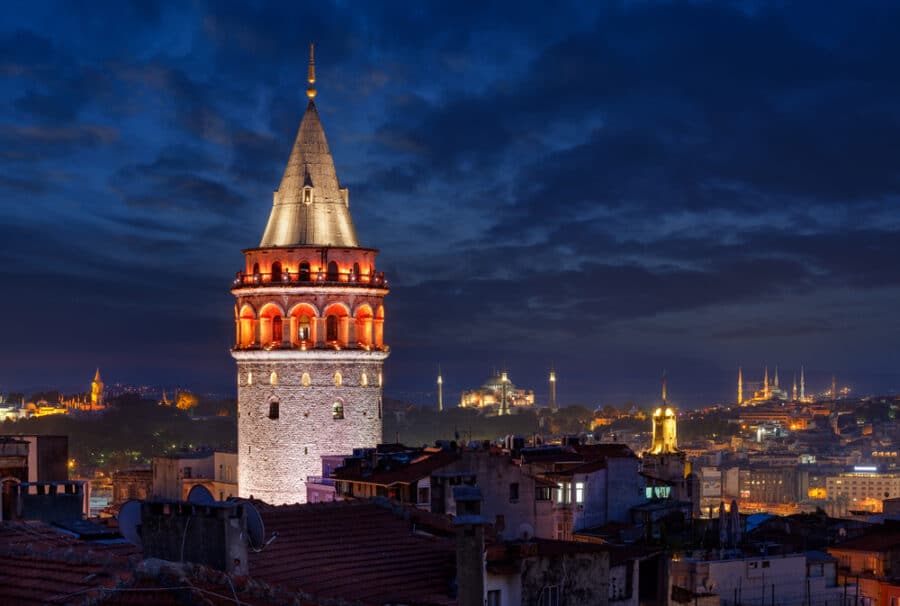
While there isn’t as much to discover at the Galata Tower as at the other places on our history highlights list, the circular stone building has some of the best views you’ll find in Istanbul.
Dating back to the mid-13th century, it was once the tallest building in Istanbul and owes its Romanesque architectural style – which stands out a mile compared to the rest of the city – to the Genoese traders who built it as a lookout.
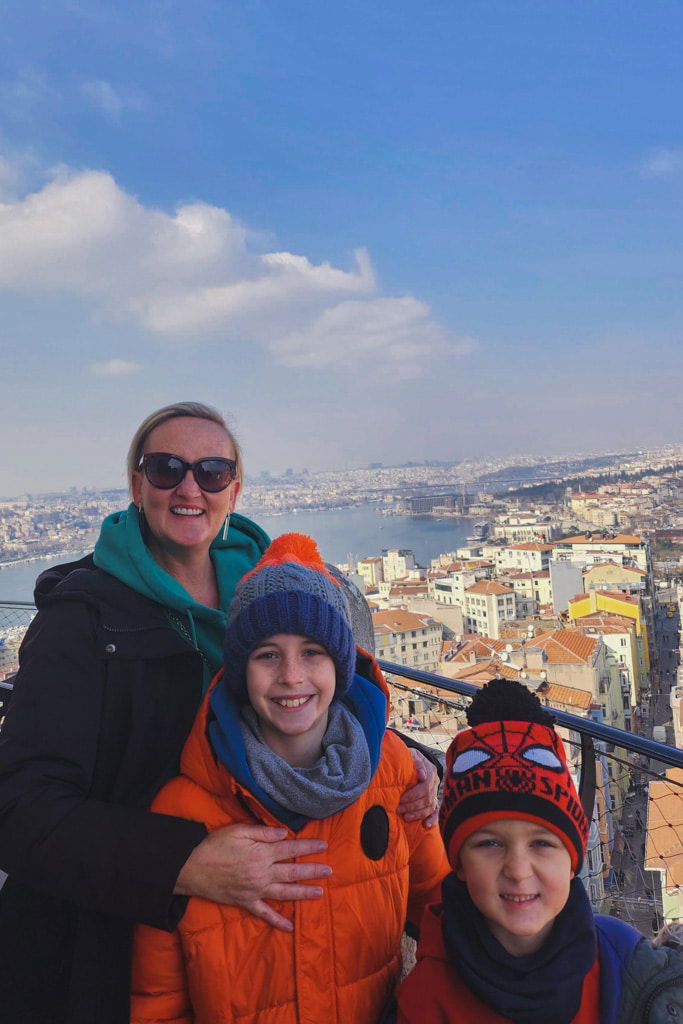
Since the 1200s, it has been transformed from a fire-detection point to a prison to a museum. We always tell visitors to time their visit during one of the daily calls to prayer so they can enjoy the sensation of being enveloped in a chorus of melodic voices reciting the adhan.
Dolmabahce Palace
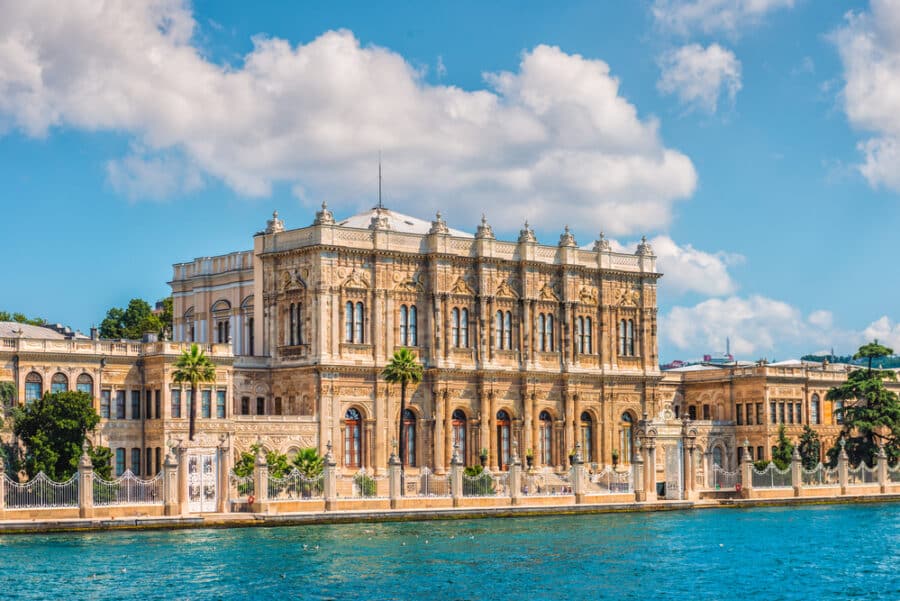
Rounding off this list, we’ve included a modern building that is also an important part of the long history: the Dolmabahçe Palace. This luxurious, neo-baroque beauty holds an enviable spot on the banks of the Bosporus and dazzles the eyes with its gold and crystal interiors.
Abdlumecid I commissioned it because the sultan felt that the Topkapi looked dated and old-fashioned compared to Western palaces. Started in 1843, construction took 13 years – perhaps an unlucky portent since the expense of the enterprise was part of the reason the Ottoman government was forced to take on unmanageable levels of debt, leaving them beholden to Western banking powers.
Dolmabahce later became a primary residence for Kemal Ataturk, the first president of the Turkish Republic, before it was opened up to tourism.
What Unique Experience Does Istanbul Offer
The Bosporus
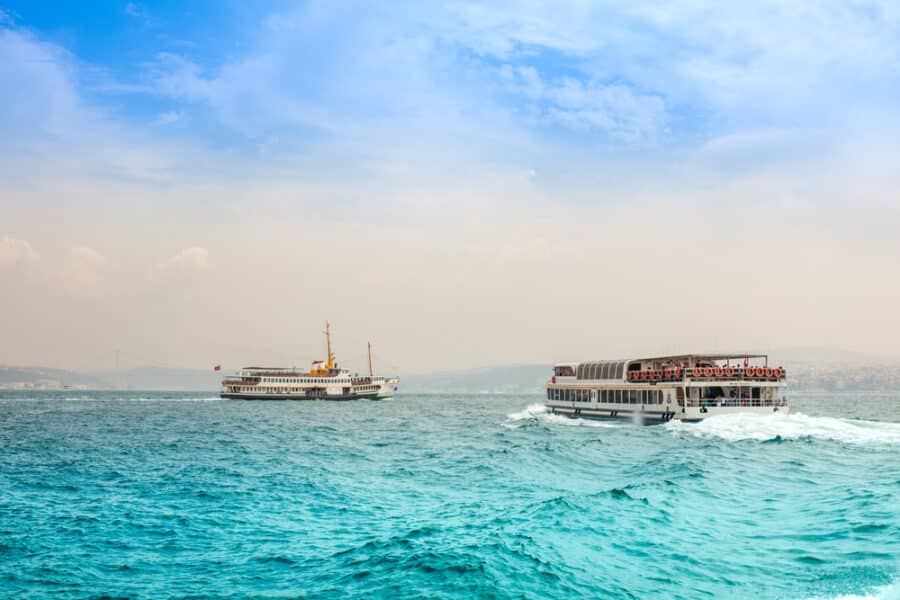
How could we talk about Istanbul tourism without mentioning the iconic waterway separating the European side from the Asian side of the metropolis? It doesn’t matter what the time of day is; the Bosporus makes for a picturesque backdrop to morning tea, afternoon drinks, or evening meals.
Ride the local ferry from Eminonu to Ortakoy, or take a private cruise on the waters to see some of the city’s striking waterside palaces. You can even opt to enjoy dinner onboard as you sail past the glittering lights of Istanbul at night.
Hammams

The Turkish hammam as a concept has been exported all over the world, but nowhere does it better than its homeland. While there are loads of traditional Turkish baths spread throughout the city, we are especially fond of Kilic Ali Pasa, which is set in a remarkably restored building, so that you feel like you are continuing your sightseeing – though, in reality, you’re mainly just enjoying a bit of self-indulgent pampering.
A great option for first-timers, the staff will explain the routine beforehand, so you know what to expect. Other hammams we can recommend are Cagaloglu Hammam and Hurrem Sultan Hamami.
Whirling Dervishes
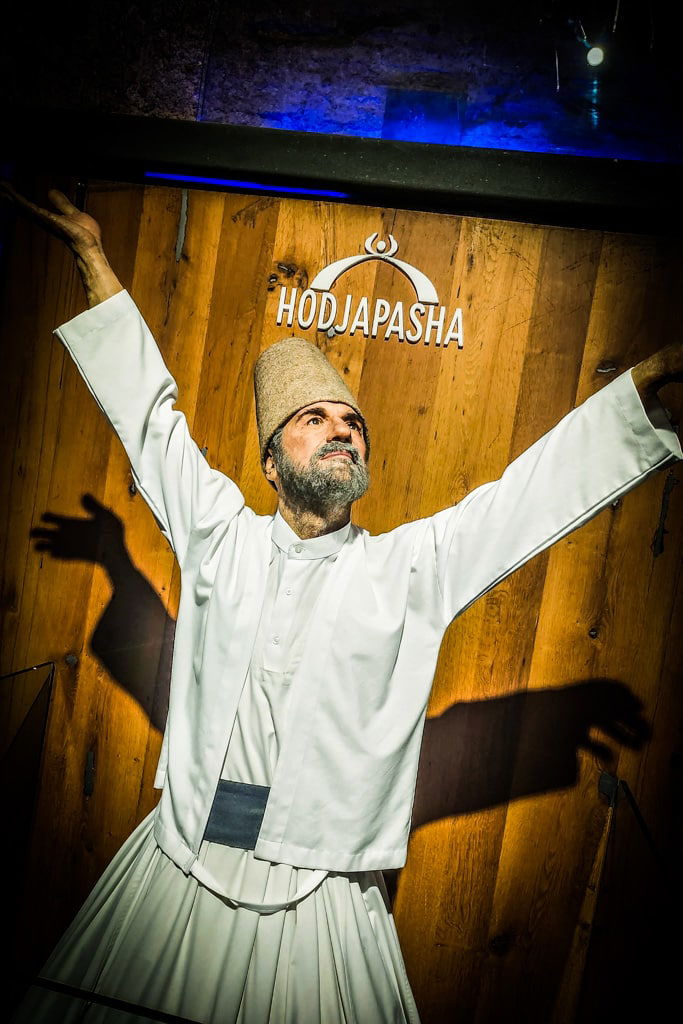
You’ve probably heard of whirling dervishes, but other than the name and perhaps a Turkish Airlines ad or two, you probably don’t know much about the practice. At the Galata Mevlevi Museum, you have the opportunity to dig a bit deeper into the years of history and culture behind the Mevlevi sect.
The sect honors Allah with their dancing, which UNESCO has designated as a Masterpiece of the Oral and Intangible Heritage of Humanity. Regular performances are also arranged throughout the week.
Wine Tasting

Did you know that Turkey has a thriving wine scene? In fact, the country has some of the oldest wine cultivation roots in the world, dating back millennia. There are several wine bars in Istanbul where you can try some of the nation’s varietals, but a much more exciting option is to arrange a day trip or even an overnight stay at one of the vineyards just outside the city.
Culture In Istanbul
Beyond the major attractions and activities, one of the other things to consider when deciding whether to visit Istanbul is the general culture. While for some of you, the high point of a holiday is seeing the sights, for others, it’s also about immersing oneself in the local experience. So, what does Istanbul have to offer?
Turkish Cuisine
Istanbul, as a tourist destination, is a foodie’s paradise. There are lots of local specialties you should try while you’re in town, whether in popular restaurants or from a street food stall. Here are just some of the many delights to put on your ‘must eat’ list:
Kebabs
There are tons of different types of kebabs you can find in Istanbul. Still, the most common are shish kebabs (marinated meat pieces on a pointy skewer), Adana kebabs (ground and spiced meat on a flat skewer), and doner kebabs (ground meat on a vertical rotisserie). These different kebabs can also be found as the constituents of other really popular Istanbul dishes, such as Iskender kebabs (sliced doner kebab meat slathered in tomato sauce over flatbread) and durum (essentially kebab meat shoved in a wrap with salad and sauce).
Lahmacun
Sometimes described as Turkish pizza, this dish is basically a flatbread topped with minced meat, spices, herbs, and ground veg (e.g., peppers, onions, and tomatoes).
Pide
Another dish sometimes referred to as Turkish pizza, Pide has a thicker base and looks more like a rowing boat cradling delicious ingredients like eggs, cheese, spinach, and ground meat.
Traditional Turkish Breakfast
They say breakfast is the most important meal of the day, which must be why breakfast platters in all parts of Turkey come with such a rich array of foods, including olives, tomatoes, cold cuts, local cheeses, dips, and freshly baked bread, as well as that essential cup of black tea served in a tulip-lipped glass.
Borek
Borek is sometimes found as part of a Turkish breakfast, though you can also purchase it on its own. These pastries are made from layered sheets of thin dough and most commonly contain feta cheese and spinach, though, as you can imagine, there are all sorts of variations.
Baklava
Arguably the most famous Turkish dessert, baklava, are filo pastries that traditionally contains sugar syrup and crushed pistachios – though walnuts are also a popular filling.
Nightlife
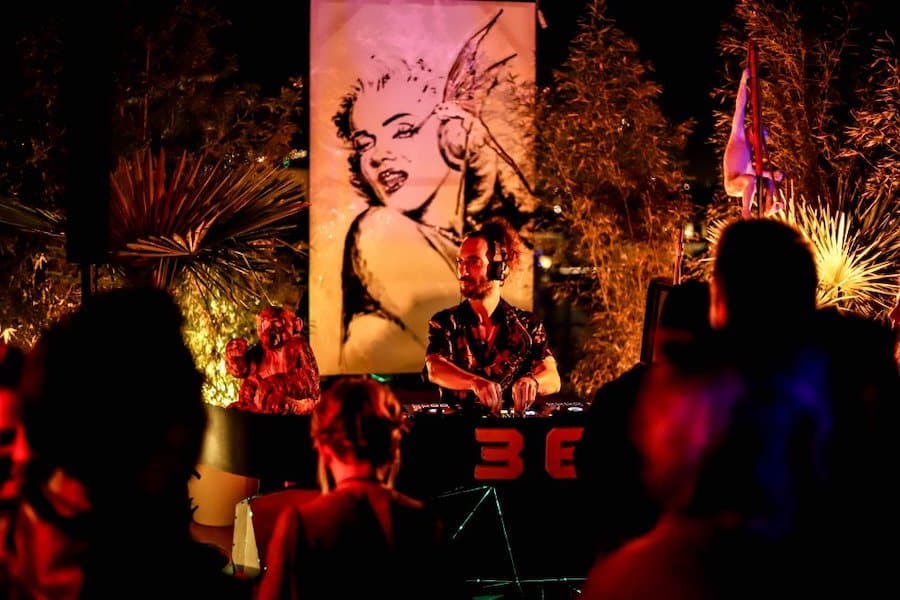
As we’ve already mentioned, Istanbul is probably the best place in Turkey for nightlife. We’ve previously written a detailed article about where to party in the city, but here are some of the districts to check out if you’re looking for evening drinks and/or dancing:
Beyoglu
Containing Taksim Square and Istiklal Avenue, this is the throbbing heart of modern Istanbul, where you’ll find a dense collection of bars and clubs. Nevizade Street, in particular, is famous for being a 24-hour hangout where you can experience meyhane (a kind of local tavern), complete with music and eats.
Besiktas
North of Taksim, Besiktas isn’t quite as frenetic but still has plenty of places where you can enjoy a fun evening, particularly around the Carsi (literally ‘market’) area.
Kadikoy
Take a walk on the Asian side of Istanbul and discover a world of chill bars filled with craft brews and a younger-leaning crowd. Prices tend to be cheaper east of the Bosporus, especially in one of the neighborhood’s dive bars.
Karakoy
Beneath the gaze of the Galata Tower, Karakoy has several rooftop bars and cocktail joints in a district that’s transformed from being purely about commerce into one of the artsier areas.
Shopping
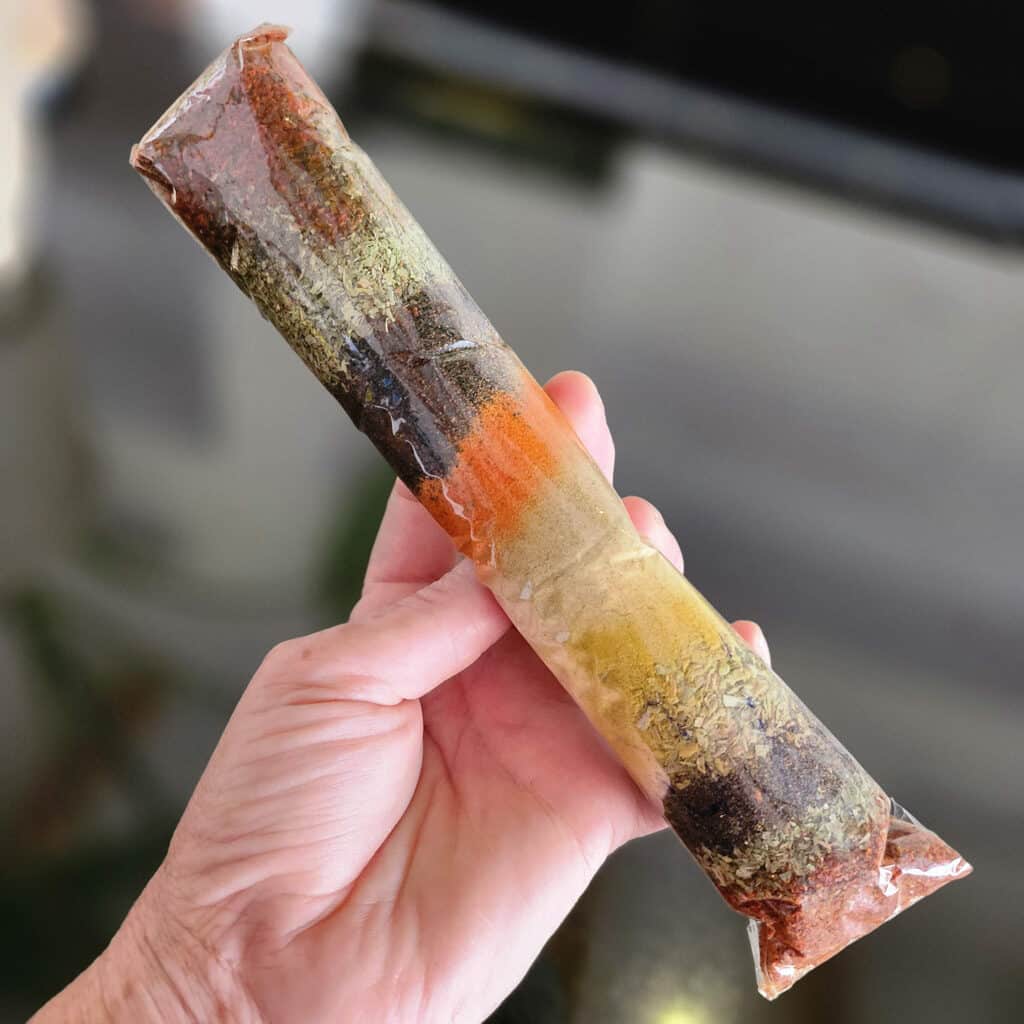
People shopping in Istanbul often find themselves pushed toward the old bazaars. While these places are perfectly fine for a slightly overpriced souvenir or just as an experience, there are many other kinds of retail therapy to be enjoyed, from markets to malls. Here’s a brief overview:
Bazaars
The most famous shopping destination in Istanbul is the Grand Bazaar, which has its roots as a covered marketplace back in the mid-1400s. Since then, it’s grown to encompass more than 60 streets and thousands of shops, most of them aimed at selling to visitors rather than locals. A short walk away, you’ll also find the Egyptian Bazaar, also known as the Spice Market, which generally focuses more on foodstuffs.
Markets
There are weekly street markets spread across Istanbul, catering to the need for fruit, vegetables, apparel, and other everyday items. If you’re someone with an eye for a bargain, this is where you’ll find it – don’t expect anyone to speak English. Some of the most popular are the Kadikoy Tuesday market, Ortakoy’s Thursday markets, and Besiktas’ Saturday Market.
Malls
There are some huge modern malls in Turkey, filled with a mixture of domestic fashion brands and international names you can find anywhere in the world – plus a selection of restaurants and entertainment (think bowling alleys and movie theaters). The largest is Forum Istanbul, which sprawls across 495,000 square meters and features an aquarium and a Legoland Discovery Center, though Cevahir and Istinye Park are also popular with locals.
So now you should have decided. Tell us, is Istanbul worth visiting for you?
Move This Adventure To Your Inbox & Get An Instant Freebie

No spam. Unsubscribe at any time.
Istanbul Turkey FAQs
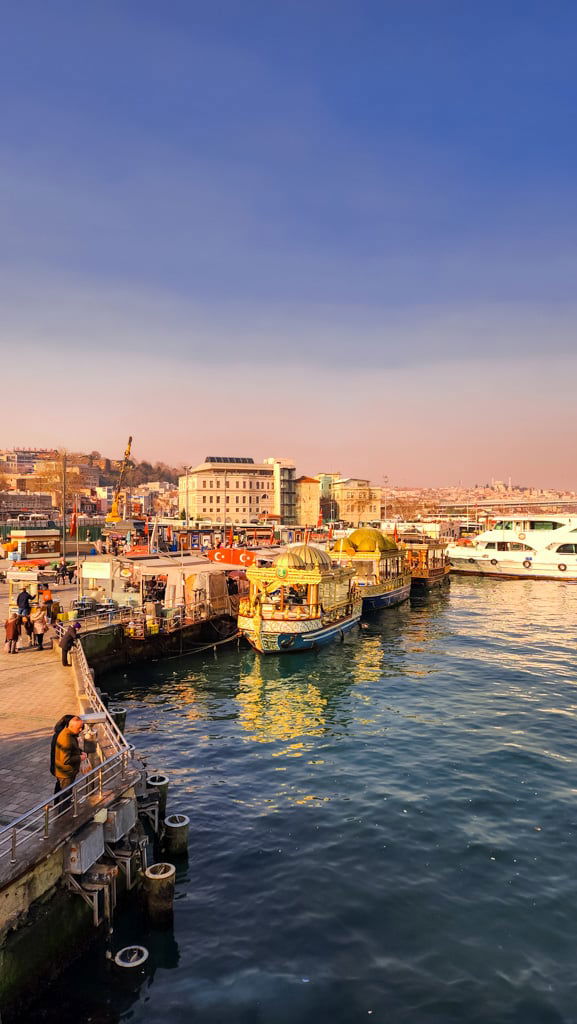
What are the top reasons to go to Istanbul?
For us, it’s probably a mixture of the historical sites and the delicious cuisine. There’s nothing better than scaling the heights of the Galata, followed by chowing down on a durum kebab or a lahmacun purchased from a nearby street stall or small shop.
How many days do you need in Istanbul?
You can manage to squeeze in most of the major sights into a hectic three days, though you will probably leave with your head spinning and half of what you’ve experienced lost in a blur of mosques, palaces, and bazaars.
When friends ask us how many days in Istanbul is enough, we tend to tell them to budget at least five if they want to see the main attractions and enjoy some time relaxing in a Turkish bath or leisurely sipping a beer at a rooftop bar beside the Bosporus.
What is Istanbul famous for?
The Hagia Sophia is probably Istanbul’s most famous attraction, though the city’s other world-famous buildings include the Blue Mosque and the Topkapi Palace. Turkey’s largest city is also renowned for being the only major metropolis to straddle two continents, reflecting how the city has acted as a bridge between Europe and Asia for millennia.
Who is Istanbul best for?
History buffs, foodies, adventure seekers – pretty much anybody who likes to travel to buzzing locales!
Who should not visit Istanbul?
Since exploring Istanbul tends to involve a lot of walking, we wouldn’t particularly recommend it if you have young children.
Similarly, if you like to spend your holidays with your feet up, there are more relaxing places to visit.
Are there any unique experiences or activities that make Istanbul worth visiting?
A trip down the Bosporus is absolutely unmissable, particularly on a sunny day. There’s something so charming and yet soothing about gliding down the waterway, enjoying gorgeous views of some of the city’s most iconic buildings while a fresh breeze lightly cools your face.
- Tips For Visiting Istanbul
- Turkish Breakfast In Istanbul
- Day Trips From Istanbul Worth Taking
- Visiting Istanbul During Ramadan
- How Many Days In Istanbul Is Enough?
- Romantic Places In Istanbul
- Where To Eat In Istanbul
- Guide To Best Places In Turkey To Visit
- A Guide To Kadikoy
- Autumn In Turkey – What To Expect & Where To Go



